AIGUES-MORTES – FROM SALTY SWAMP TO MEDIEVAL FORTRESS
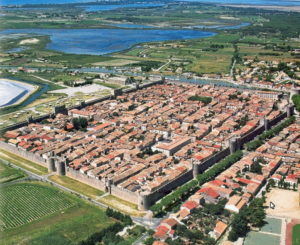
Sitting on the flat marshes of the Camargue in the Languedoc-Roussillon region of Provence, this fortified medieval town is regarded as the purest example of 13th century military architecture extant in France. The rectilinear town is surrounded by high, crenellated ramparts, four corner towers and numerous fortified gates, all completely intact.
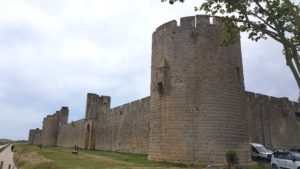
The town’s name comes from the Latin aquae mortuae, dead or stagnant waters, describing the surrounding saline delta. Salt mining in the area commenced in the Neolithic period and continued into the Hellenic period. The foundation of a settlement is attributed to the Roman general Gaius Marius around 201 BCE, and although no major archaeological remains have been discovered, it’s assumed that any remains have been destroyed by modern saline facilities.
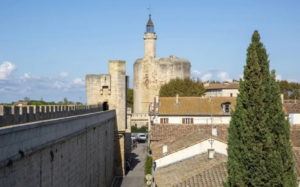
The local people lived in reed huts and made their living from fishing, hunting and salt production. Due to its strategic coastal location, Charlemagne erected a signalling tower in 791 to give warning of any approaching hostile fleet, and at the same time granted the Benedictine Abbey of Psalmody at nearby Saint-Laurent-d’Aigouze the right to rule over the region, including running its salt production.
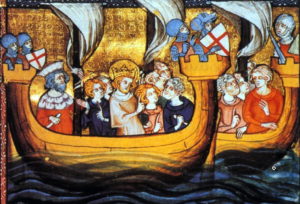
In 1240, King Louis IX (later ‘Saint’ Louis) focussed on the strategic position of his kingdom—his younger brother Charles of Anjou, who was king of Naples and Count of Toulouse and Montpellier, owned Marseilles and occupied the coast to the east and south. Louis wanted to have his own direct access to the Mediterranean and lessen the grip of the Italian navy, who controlled the transportation of troops to the Crusades.
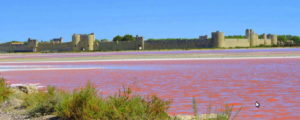
Louis did a land swap with the monks of the abbey and obtained the small hamlet and surrounding lands. In what was no doubt a popular move with the locals, Louis decreed them exempt from the salt tax that had been levied by the Abbey, so that they could henceforth harvest the salt unconstrained.

Louis set about a program of rebuilding the town, constructing additional watch towers, including the Constance Tower to house a garrison, a castle which no longer exists and built a road between the marshes. Construction of walls was commenced by Louis and completed by his son and successor, Philippe III le Hardi (the Bold) over 30 years. Eventually, almost 2 kms of walls completely encircled the small town of Aigues-Mortes, punctuated by 20 towers. The fortifications are a listed National Monument.
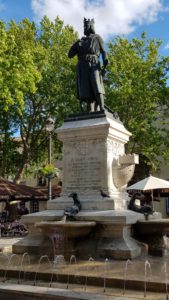
At a time when all self-respecting monarchs proved their mettle by heading up Crusades, Louis departed twice for the Holy Land from the port at Aigues-Mortes: the seventh Crusade in 1248 and again for the eighth Crusade in 1270, when he died of dysentery off the coast of Tunis. Crusaders, mercenaries and traders continued to depart from the harbour for some years after the death of Louis, and his new town grew to become one of the most important strategic ports on the Mediterranean.
Aigues-Mortes was always a compromise however. The town lies in the corner of the Camargue, Europe’s largest river delta. So it was never on the sea, but rather, separated from it by marshes. So to give Louis’ fleet access from his new port to the Mediterranean, channels had to be built through the marshlands and etangs (lagoons) to allow his ships to load and unload.
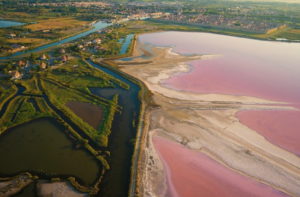
These channels had to be cut and re-cut in the following century due to the build-up of silt from the Rhône. Once France captured Marseilles during the 14th century Albigensian Wars, it then had a far superior, and sensible, port from which to launch its Mediterranean ventures, and Aigues-Mortes fell into disuse. The silt pushed the sea further out, a process which only accelerated with the deforestation of the banks of the Rhône.
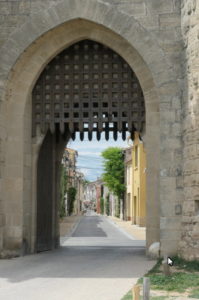
However, the town didn’t die completely. Instead, it became a prison in the 14th century, in which Knights Templars were held, and in the 15th century it was used to incarcerate Protestant Huguenots after the revocation of the Edict of Nantes in 1685, and up until 1767.
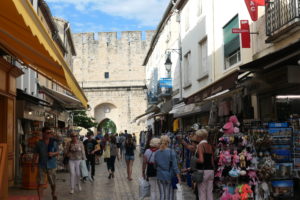
Today, the town is a major tourist attraction, smaller than, but comparable to the walled city of Carcassonne. The local economy also depends on the production of sea salt, wine and asparagus. A popular excursion is to visit the rather eerie red salt lagoons, Salins, where you’ll see huge, sparkling, white mountains of salt from which the famous “Fleur du sel” is derived—today, the Salins occupy over 10,800 hectares of land. The easiest way to do this is to hop on the kitsch little tourist train, run by the ‘Salin d’Aigues-Mortes’, and take their tour of the salt marshes. You’ll also get great views of the impressive walls of Aigues-Mortes from a distance.
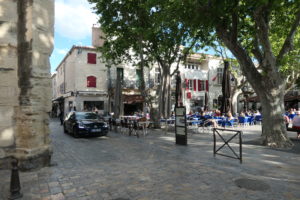
Inside the defensive walls, the town’s linear streets are lined with well-maintained tightly packed, attractive buildings. Many of them have shops of all kinds and although a large percentage of these are tourist-oriented—and a number sell good quality artesanal products made locally—many also serve the residents of the town. There are plenty of pleasant places to sit and relax under a shady canopy with a coffee or restorative cool drink.
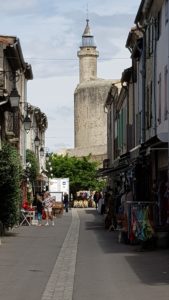
There’s a large selection of bars, cafés and restaurants, many of which are grouped around the picturesque main square, Place St Louis, with its statue of Louis IX, decked out in chain-mail, ready to head off on Crusade. However, it’s a town that invites exploring beyond the busy shopping precinct. It’s well worth wandering along some of the quieter streets away from the tourist hubbub where you’ll find more interesting bars, cafés and eateries that make more of a culinary effort to cater to their local clientele.
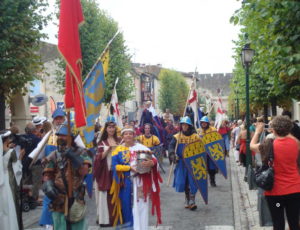
The town celebrates its association with Louis IX with the annual ‘Fete de la Saint Louis’, held over a long weekend in August—this year, it’s 23 to 25 August.

The program consists of a parade of troops in full medieval costume, a parade with the king and his court, knights, flag throwers, “picturesque” peasants, strolling musicians, re-enactments of Louis IX’s departure for the Crusades, as well as jousting tournaments and so forth, a medieval market at 9.00pm each evening, and a pyrotechnic show with accompanying music.
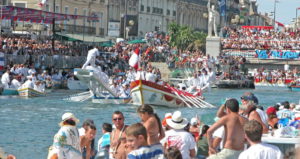
It’s worth noting that the nearby coastal town of Sète also holds an annual Festival of St Louis (this year it’s 22 – 27 August), famous for its water jousting contests that take place along the royal canal, which draws thousands of spectators.
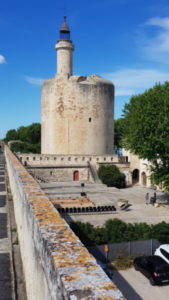
One of the best things to do in Aigues-Mortes is to walk around the top of the ramparts that enclose the town. This will take a little over an hour and tickets cost around 7.50 Euros. If you opt for the audio guide, the function of each tower is explained, and of course the view of the whole town and out across to the salt lagoons is outstanding. You can also get great views at sunset when the long, honey-coloured stone walls are tinged pink by the rays of the setting sun.
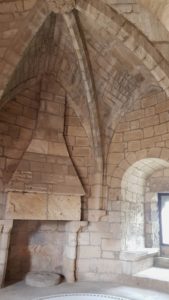
The Constance Tower is the highlight, with a number of large, impressive vaulted rooms.
There are other interesting attractions to explore including the oldest monument in town, the small Gothic Church of Notre Dame-des-Sablons, built in the 13th century and pre-dating the ramparts, where Louis IX worshipped before embarking for his first Crusade.
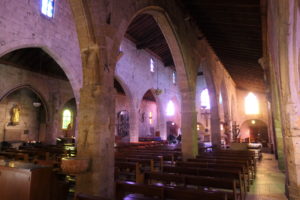
Two other chapels are also worth seeking out: the 17th century Chapel of the Grey Penitents on Place Paul Bert, and the Chapel of the White Penitents at the end of rue de la République, which were built for two religious brotherhoods dating from the Middle Ages.
Note that the weekly market is held in town on Wednesdays and Sundays.

As you explore this beautiful region with its unique heritage and traditions, you will see distinctive salt water-loving Camargue bulls and the famous white Camargue horses that are bred in the surrounding countryside.
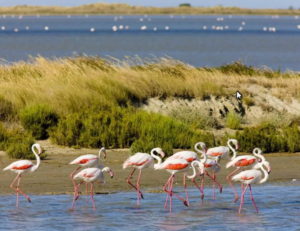
If you’re lucky, you might catch sight of a flock of vivid pink flamingos, or even some wild horses.

A good way to discover part of the Camargue is by boats which leave from the port opposite the Tour de Constance. These tours also stop at a typical working Manade (bull farm) for a traditional display of horse-riding skills by Camargue Gardians (cowboys).

An interesting titbit of trivia: The action in Ernest Hemingway’s posthumously-published novel ‘The Garden of Eden’, takes place in Aigues-Mortes.
We stayed in the most perfect location, in a wonderful hotel just inside the walls and facing the Tour de Constance, called the Hôtel des Remparts & Spa.
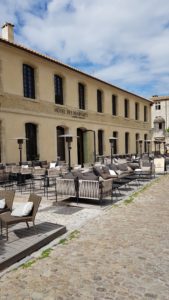
The hotel is an outstanding conversion from an 18th century military barracks. Many of the original features have been preserved and restored, converting the vaulted rooms and thick stone walls into beautifully appointed and impeccably decorated spacious rooms, inviting lounge areas as well as a delightful outdoor terrace.
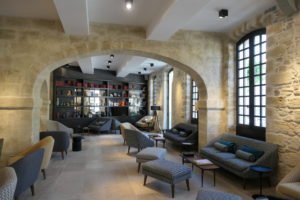
The resident spaniel, Nestor, ensures that every guest is made to feel completely at home, and enjoys nothing better than hopping on the golf cart to accompany guests to the carpark! The hard-working owners also converted and restored three other outstanding hotels in Carcassonne that they still operate. Other members of the family own our favourite hotel in St Tropez, the Hotel des Lices.

Parking is not permitted inside the town, except for locals and delivery, but this doesn’t present a problem if staying at this hotel, as they have a golf cart to transport guests and their luggage back and forth to the parking lots along the outer wall.
Aigues-Mortes is 35 kms from Nîmes and 30 kms from Montpellier. A rail branch line from Nimes passes through Aigues-Mortes to its terminus on the coast at Grau-du-Roi.



Leave a Reply